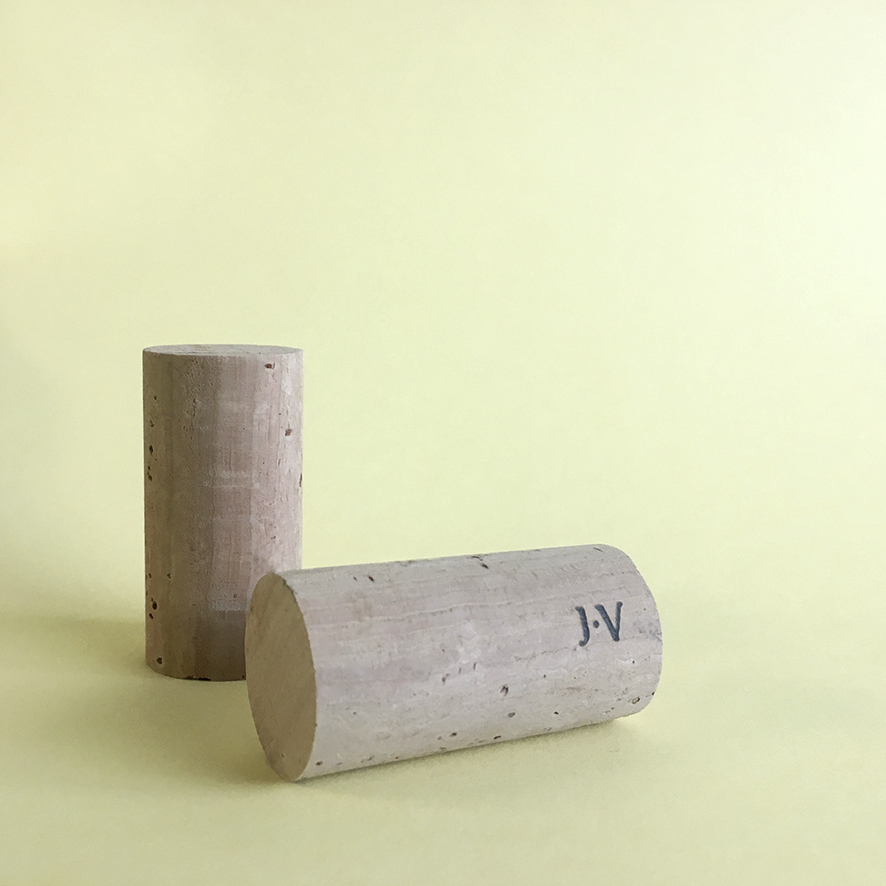
RESEARCH PROJECT
Conclusions of the oxygen permeability study
The investigation determines the relevance of the production process of stoppers
January 2023
J Vigas has participated in the “Project to determine the evolution of oxygen permeability throughout the different manufacturing conditions of cork stoppers and the effect of this parameter on still and sparkling wine” (2017- 2022).
The project has been developed by the Catalan Cork Institute Foundation as the research center and coordinator of the partnership of four companies that manufacture cork stoppers in Catalonia: J. Vigas and Manuel Serra, specialized in natural cork stoppers, and Francisco Oller and TESA, that make agglomerated cork stoppers with two discs for sparkling wine. The Champagne Committee and the Institute of Vine and Wine Sciences of the University of La Rioja have collaborated in the study.
The main objective of this study was to corroborate whether the differences in the level of the oxygen permeability of cork stoppers identified at the laboratory, could be seen in the wine. The achievement of this objective has allowed, on the one hand, to validate the method of analysis and, on the other, to acquire knowledge about the manufacturing process of cork stoppers and its influence on oxygen permeability.
Among other conclusions, it has been determined that the oxygen supply after corking with a correctly bottled cork comes from the cork itself and not from the ingress of external oxygen.
The importance of OTR (OxygenTransferRate)
The evolution of wine is extremely dependent on the amount of oxygen it receives. Oxygen plays a crucial role in the entire oenological process, from harvesting the grapes to opening the bottle and consuming its contents. Several studies show that the same wine covered with stoppers with different permeability can evolve in a different way.
For this reason, after bottling, the exposure to oxygen depends on the efficiency of the closure. The permeability of each plug is measured as the Oxygen Transfer Rate (OTR) or oxygen entering the bottle over time (mg O 2 ).
There is currently no standardized methodology to quantify the oxygen permeability of a stopper. However, the Catalan Cork Institute Foundation (ICSuro) coordinates the UNE CT56/SC5 working group to implement it. The ICSuro began its research in this field in 2016.
To carry out a careful study of how the production process can influence the permeability of cork stoppers, several parameters have been studied in their production.
In the case of natural stoppers for still wine, the process and the type of washing, the type of leveling or the surface treatment have been monitored.
In the case of stoppers for sparkling wines, the number of discs, the quality and density of the discs, the surface treatment or the quality and compression of the agglomerate have been analysed.
Conclusions
After five years of study, the following conclusions have been reached:
- The oxygen supply after corking with a correctly bottled cork comes from the cork itself and not from external oxygen ingress.
- The oxygen permeability of the stoppers and the storage conditions of the wine are key parameters to ensure its correct organoleptic state. These parameters influence the evolution of still wine at an analytical and sensory level.
- The bottling process (regularity and control of oxygen ingress) has been reaffirmed as a critical point of paramount importance to obtain the desired evolution of the wine.
- The position of the bottle after corking is essential and the results obtained change depending on whether it is stored vertically or horizontally.
- The recovery time after closure, from one to five minutes, must be respected and bottles must not be moved or stored in a horizontal position until after this time.
- The participating companies have characterized their production processes in terms of their contribution to oxygen permeability.
- The knowledge acquired during the project should allow modulating the production process to increase the homogeneity of the natural cork stoppers.
- Oxoluminescence has been validated as a method for measuring the oxygen permeability of cork stoppers, since the conclusions drawn at the laboratory level can be extrapolated to wine.
- In sparkling wine, it has not been possible to verify that the OTR has a definitive impact on the organoleptic profile of the wine. New evidence will have to be developed in this regard.
